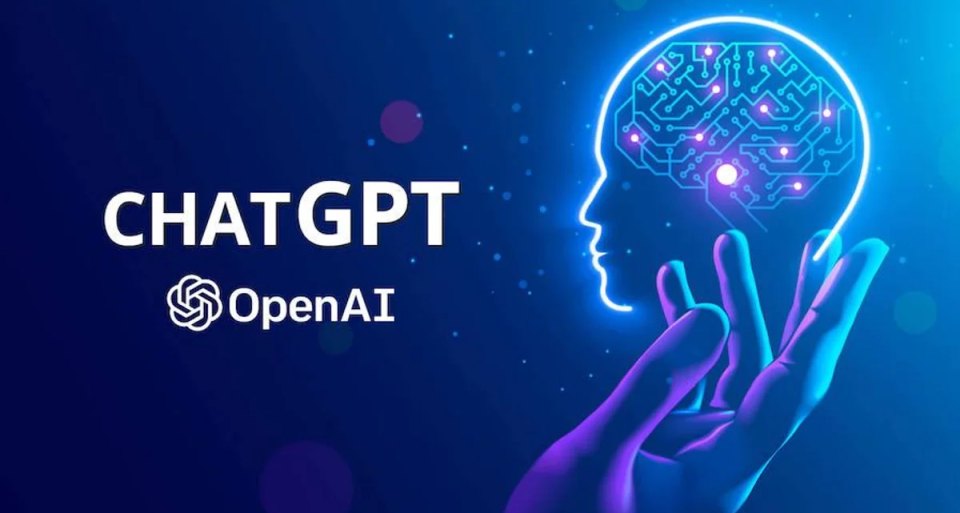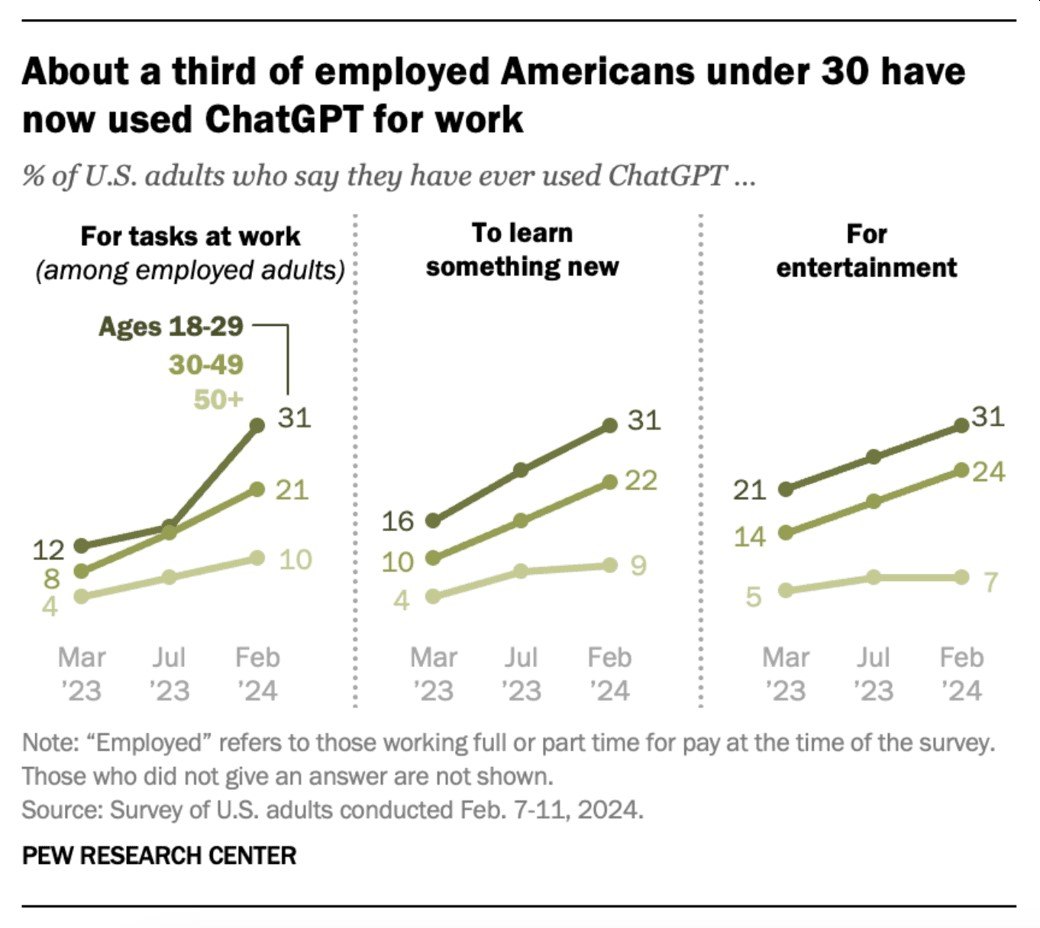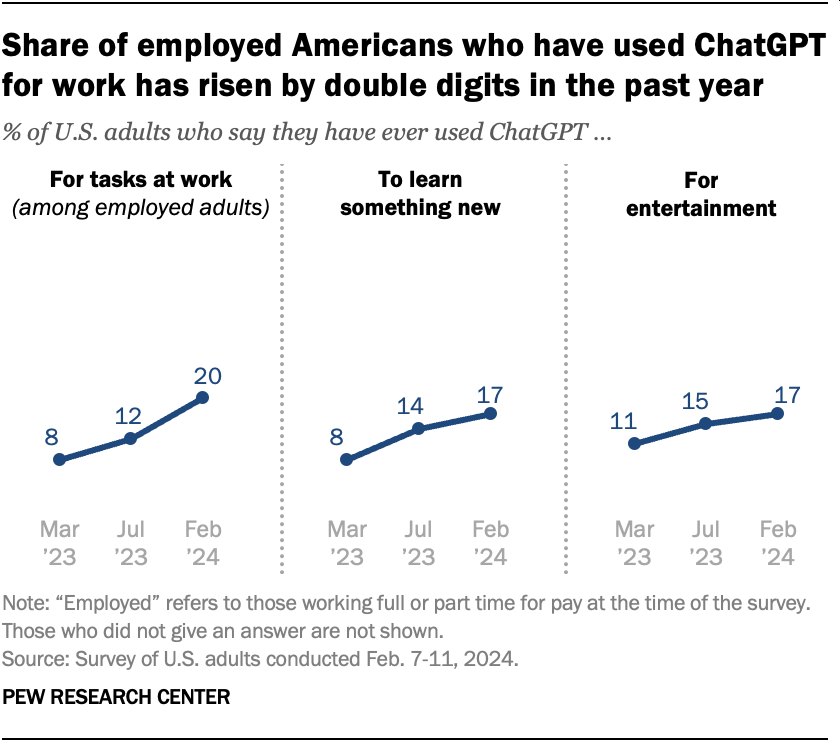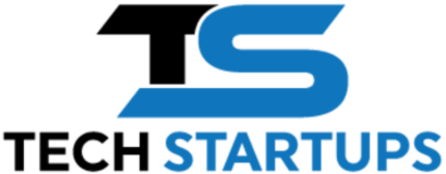Nearly 33 percent of young Americans have used ChatGPT at work, new survey shows

ChatGPT, the popular chatbot created by OpenAI, has slowly been making inroads into corporate America since its launch about two years ago. According to a recent survey conducted by Pew Research, approximately one-third of American working adults below the age of 30 have used ChatGPT at work, marking a nearly threefold increase year-over-year. However, the surge in interest isn’t exclusive to OpenAI alone.
The survey also reveals a notable trend among American adults under 30, with a striking 43% having leveraged ChatGPT, marking a 10-percentage-point uptick since last summer. Although there’s been a modest rise in usage among those aged 30 to 49 and 50 to 64, these demographics still lag behind their younger counterparts in embracing the technology. Notably, only 6% of Americans aged 65 and above have utilized ChatGPT.
“Adults under 30 stand out: 43% of these young adults have used ChatGPT, up 10 percentage points since last summer. Use of the chatbot is also up slightly among those ages 30 to 49 and 50 to 64. Still, these groups remain less likely than their younger peers to have used the technology. Just 6% of Americans 65 and up have used ChatGPT.”
The survey underscores that highly educated adults are at the forefront of ChatGPT usage, with 37% of individuals holding postgraduate or other advanced degrees having engaged with the platform, reflecting an 8-point increase since July 2023. This demographic surpasses those with only a bachelor’s degree (29%), some college experience (23%), or a high school diploma or less (12%) in ChatGPT adoption.
“Highly educated adults are most likely to have used ChatGPT: 37% of those with a postgraduate or other advanced degree have done so, up 8 points since July 2023. This group is more likely to have used ChatGPT than those with a bachelor’s degree only (29%), some college experience (23%) or a high school diploma or less (12%),” Pew Research’s survey revealed.

Credit: Pew Research Center
How have Americans used ChatGPT?
Despite the upward trajectory in adoption rates since July 2023, a significant portion of the American populace is yet to tap into the potential of chatbots. However, certain demographics exhibit a much higher likelihood of utilization compared to others.
The survey further delves into the various ways Americans have employed ChatGPT since March 2023, including for work-related tasks, learning endeavors, or entertainment purposes.
Analysis of the data reveals a substantial increase in the percentage of employed Americans leveraging ChatGPT for work, soaring from 8% in March 2023 to 20% in February 2024, with an additional 8-point rise since July. The platform’s utilization for learning or entertainment has also witnessed an uptick, with approximately one in five Americans utilizing it for each purpose, marking a notable increase from the previous year.

Credit: Pew Research Center
When examining usage patterns across age groups, it becomes evident that younger demographics exhibit a higher propensity for incorporating ChatGPT into their work and leisure activities. For instance, around one-third of employed individuals under 30 have integrated ChatGPT into their work routines, marking a significant 19-point increase from a year ago.
Similarly, disparities in ChatGPT usage are discernible across educational backgrounds. A third of employed individuals holding postgraduate degrees have utilized ChatGPT for work, compared to smaller proportions among those with lower educational qualifications. Moreover, there’s a clear correlation between education level and the utilization of ChatGPT for learning or other purposes, with higher-educated individuals exhibiting a greater propensity for engagement.
As ChatGPT continues to permeate various aspects of American professional and personal lives, these trends offer valuable insights into the evolving landscape of AI integration in everyday activities.
ChatGPT made its debut on November 30, 2022, and swiftly became a subject of fascination in the realm of artificial intelligence. Positioned as a dialogue-based chatbot, ChatGPT earned accolades for its prowess in text and image generation.
Within just five days post-launch, ChatGPT soared to an impressive milestone of one million users, a feat that’s particularly remarkable when compared to the growth trajectories of other major platforms. To illustrate, it took Netflix 3.5 years, Facebook 10 months, Spotify 5 months, and Instagram 2.5 months to hit the same user count.
A month later, experts lauded ChatGPT for its adeptness in writing, tackling complex tasks, and its intuitive interface. By the two-month mark, ChatGPT had amassed a staggering 100 million monthly active users, marking it as the fastest-growing consumer application in history.
Powered by the Generative Pre-trained Transformer (GPT), a variant of large language models developed by OpenAI boasting up to 175 billion parameters, ChatGPT operates on a neural network framework. Its training involves predicting the subsequent word in a sequence based on preceding words, resulting in text generation that closely mimics human speech. Leveraging the capabilities of large language models, ChatGPT and similar generative AI tools emulate natural conversation styles to produce text.
 Want Your Story Featured?
Want Your Story Featured?
Get in front of thousands of founders, investors, PE firms, tech executives, decision makers, and tech readers by submitting your story to TechStartups.com.
Get Featured



